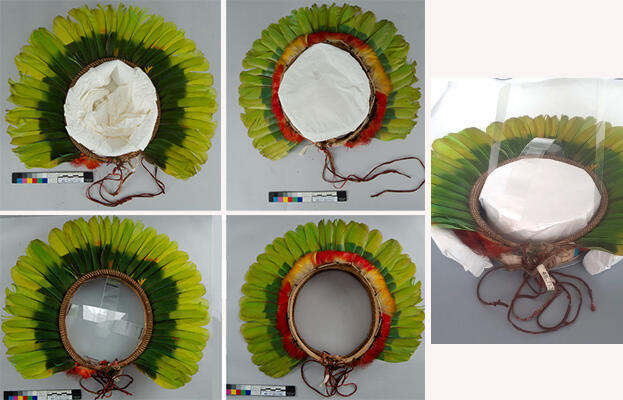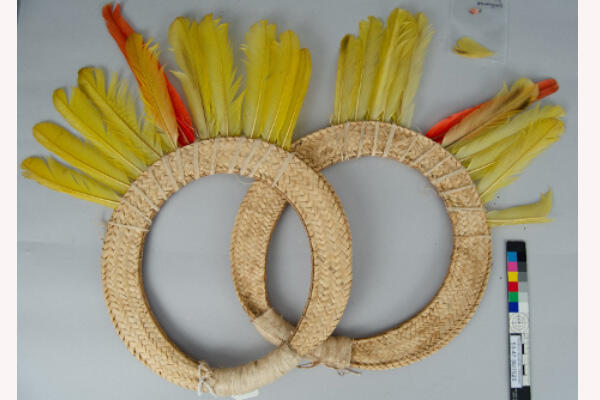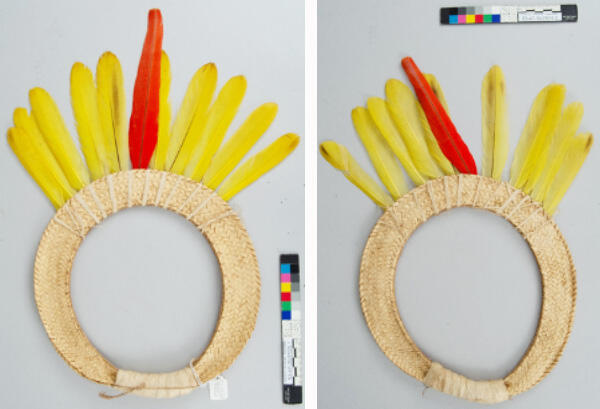Internships at the Peabody
Currently the conservation department at the Peabody Museum is not offering internships due to the pandemic. Stay tuned for the next opening!.
Featured intern projects: Feather Headdress and Raffia Headbands by Paige Van Tassel

Fig. 1. Feather Headdress. Details from before (top), after the treatment (bottom) and detail of the mounting support (right).
As a summer objects conservation intern at the Peabody Museum of Archaeology and Ethnology, I had the pleasure to work on various organic materials that originated from South America. One of the projects I focused on during the internship was a feather headdress that is constructed with green Amazon parrot tail feathers, as well as the down feathers of yellow, red, and black from a toucan bird. The headdress was constructed by the Kofan or Siona people of western side of the Amazon Basin near the modern borders of Ecuador, Colombia, and Peru. The headdress had been stored upside down, and when taken out of its storage location, it was evident that there was significant fraying of the feathers from handling. Conservation treatment included both dry surface cleaning and wet cleaning with a solvent mixture to re-align feather barbs. A new storage support was custom-designed to prevent further damage to the feathers.

Fig. 2. Feather headbands before treatment.
The other project which I had the opportunity to work with involved a pair of raffia headbands that were traditionally worn by Makuna youth who participated in ritual dances associated with the peach palm festival. These headbands were constructed using a circular raffia ring and represented the colours of the sun with red and yellow Macaw feathers that shoot out like rays of the sun. The main conservation issues with these objects were overall dust accumulation and a fragment which had been disassociated due to insect damage and needed to be re-attached to the feather to restore unity and symmetry to the two bands. There was also structural support needed for individual barbs which had been disassociated with insect damage. The fragment reattachment was done with an isopropanol methylcellulose adhesive and Japanese tissue while the barbs were re-attached with the isopropanol and methylcellulose adhesive mixture with hair silk.

Fig. 3. Headbands after treatment.